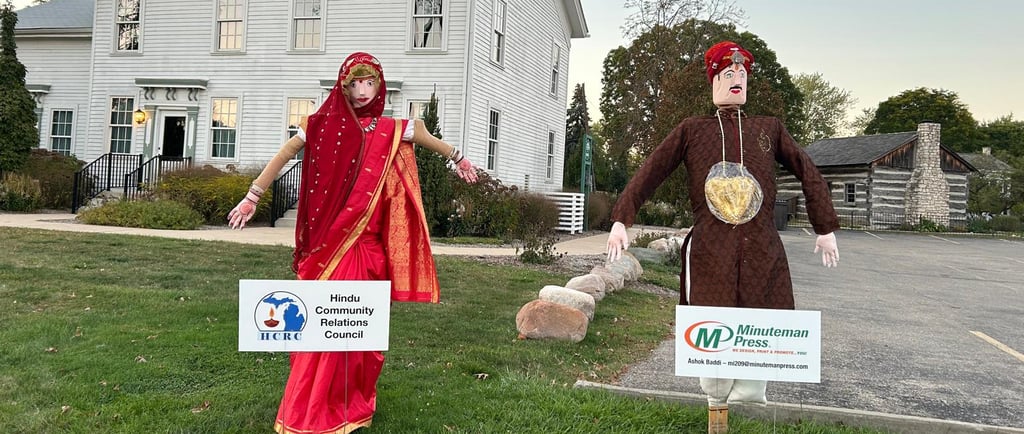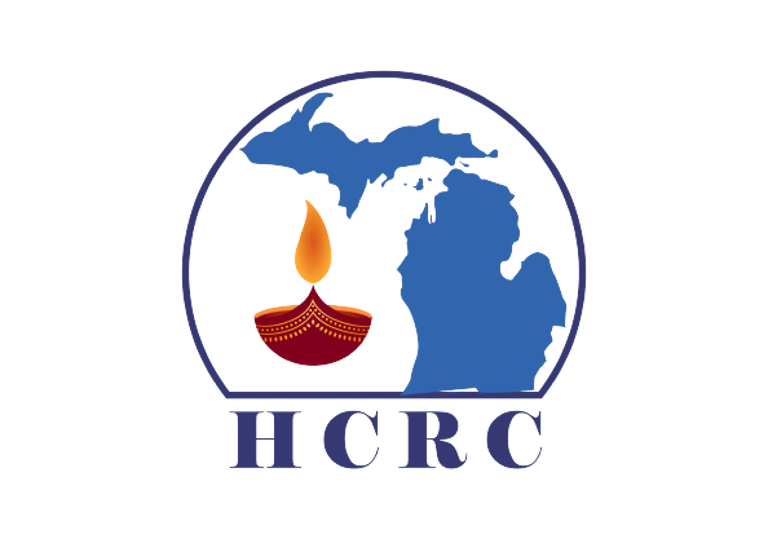2025: Meet our scarecrows
Pamposh and Pushkarnath
HCRC Board
10/10/20251 min read


On display is a Kashmiri Hindu couple: Pamposh, the bride, and Pushkarnath, the groom.
The bride's traditional headpiece, called the Taranga, is a distinctive and elaborate element of Kashmiri Pandit bridal attire. This multi-layered headwear consists of a cap known as the Kalpush, covered by a white cloth called the Zoojh, with decorative lace paper stitched on top. A dupatta is then draped over the entire headgear to complete the bridal look. She also wears Dehjoor, special long gold earrings that symbolize the sacred union of Shiva and Shakti. In Hindu philosophy, Shiva represents the universal form of masculinity and Shakti represents femininity — their union embodying the balance of cosmic energies.
The groom's headwear, the Gordastar, is a ceremonial turban traditionally tied by the groom's paternal uncle on the morning of the wedding. The bride is dressed in a silk saree, while the groom wears a silk kurta-pyjama set. Their wedding is solemnized through a Yagna, a sacred ceremony with Vedic chanting performed in front of the holy fire.
Following the ethnic cleansing of Kashmiri Hindus in 1989-90 due to Islamic militancy, more than 400,000 Pandits were forced to flee from their homeland where they had lived for thousands of years. This ancient community has been scattered across India and the globe — including here in Michigan. Uprooted from Kashmir, the community faces an existential threat: the gradual erosion of its cultural identity. As inter-community marriages become more common, there is a growing call to preserve and pass on these traditions so future generations can remain connected to their heritage.
